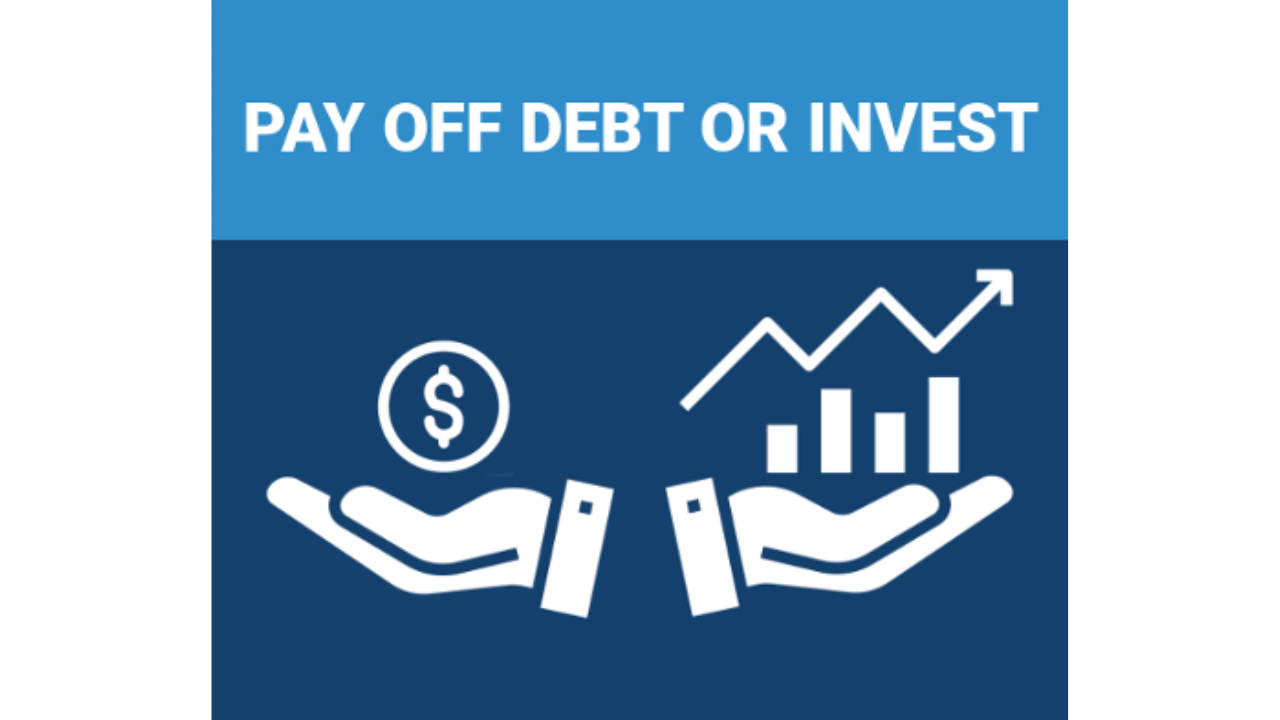Pay Off Debt or Invest?

If you ask a group of people if you should either aggressively pay off debt or make minimum payments to invest the rest, prepare for a hot debate! You will likely receive responses of what they would do, based on a range of rational assumptions and reasonable emotions without respect for your financial situation. The issue with one-size-fits-all advice is that it hardly fits anyone.
Rather than telling you which route to choose on your debt repayment journey, I am going to share insights from both sides of the fence, quantitative and qualitative. Once you understand your financial situation in alignment with your family’s values and desired outcomes, you can implement well-informed decisions with greater clarity and confidence.
Debt pushes today’s expenses into the future.
Investing saves for future expenses today.
Is ALL debt bad?
When I ask families if they have debt, they often respond, “We have no debt…only the mortgage.” We acknowledge the mortgage as belonging to the liabilities side of the balance sheet, yet this reply suggests that we mentally split our debt into two camps: good debt and bad debt. We may also feel ashamed and embarrassed about debt, stemming from regretful personal experiences or from what we have heard from financial media sources.
Moving forward with this idea of good and bad debt, here are the common characteristics of each:
"Good Debt"
- The benefit of the purchase lasts longer than the debt repayment period.
- The loan is secured (backed by an asset).
- The asset’s value is likely to appreciate, increasing net worth over time.
- The interest rate is lower than the expected investment return over the debt repayment period.
Examples of good debt may include a mortgage for an affordable personal residence or rental property, college loans with earning potential that outweighs the total expenses, or responsible small business loans to accelerate revenue growth.
"Bad Debt"
- The debt repayment period lasts longer than the benefit of the purchase.
- The loan is unsecured (not backed by an asset).
- The asset’s value is likely to depreciate, further reducing net worth over time.
- The interest rate is greater than the expected investment return over the debt repayment period.
Examples of bad debt using these metrics may include credit cards that carry ongoing balances, high-interest automobile loans, payday loans, and retirement plan loans.
You may notice that certain debts cannot be perfectly defined using this binary framework. What about an auto loan with a 0% introductory rate? Or a high-interest student loan? Again, these decisions are not one-size-fits-all.
Thinking About Money in Terms of Time
When comparing interest rates to investment returns, we often analyze percentages without respect for time. The problem with our optimism about future investment possibilities is that we are influenced by cognitive biases, including framing and confirmation bias – the tendency to seek information that confirms an existing belief. Although, yes, the S&P 500 stock market index has experienced greater than 10% average annual returns since inception, we must acknowledge that risk and return characteristics across various investment periods greatly vary.
Using the S&P 500 index as our US stock market benchmark, we can conceptualize the range of historical returns when held over short-term (1-5 yr), intermediate-term (6-10 yr), and long-term (11+ yr) periods.

This chart indicates that historically investing in the stock market index over shorter time horizons resulted in greater chances of negative annualized (and therefore cumulative) returns. The annualized returns over 5-year rolling periods ranged from -12.5% (during the Great Depression) to +28.6 (preceding the dot-com bubble), with 12 of 91 rolling periods (13.2%) experiencing loss. When deciding whether to invest or make additional principal payments on a 5-year car loan, we can evaluate the historical risks of winning (and losing) the bet over its respective repayment period. If we acknowledge our subjective feelings about risk (risk tolerance) and our objective ability to take risks (risk capacity), we can make repayment decisions with greater awareness. Paying off debt quickly, making only minimum payments, or choosing a hybrid approach could be the right decision for a different family.
Reviewing the lower section of the chart, we discover that having a disciplined, long-term investment approach has historically resulted in positive total returns over every rolling period, specifically longer than ten years. For this reason, a family may feel more comfortable making minimum payments and investing over a 30-year repayment period based on historically low fixed mortgage rates. The lowest annualized return over a 30-year rolling period invested 100% in the S&P 500 index has been 8.5%, including periods through the volatile Great Depression (1929-1941) and Great Recession (2007-2009). Before making any investment decisions, we must acknowledge that past market returns do not indicate future investment returns, regardless of their 96-year history. The only guaranteed return is received by your debt servicer when you incur loan interest.
How to Measure Twice® and Keep Finance Personal®
Sort your debts by type, interest rate, remaining repayment period, and how you interpret them both emotionally and technically. Calculate your loans’ remaining debt repayment periods using the same method we walked through in the “How to Review a Mortgage Statement” article. Would you prefer to have your debts fully paid before retirement or at a certain age? How will your chosen strategy affect current and future cash flow flexibility and taxable income? Will you implement and track a disciplined investment strategy to ensure you actually benefit from investing the rest? If you are being rational with your decision-making, be careful not to be irrational with your implementation.
Seek to align your finances with your family’s objectives and values without acting upon advice from others who do not understand your comprehensive situation.
Practice thinking about money in terms of time, giving every dollar (and debt) a job and a use-by date. Move beyond the binary "pay off debt vs. invest" debate as you discuss this topic with your family in a more personal way.
